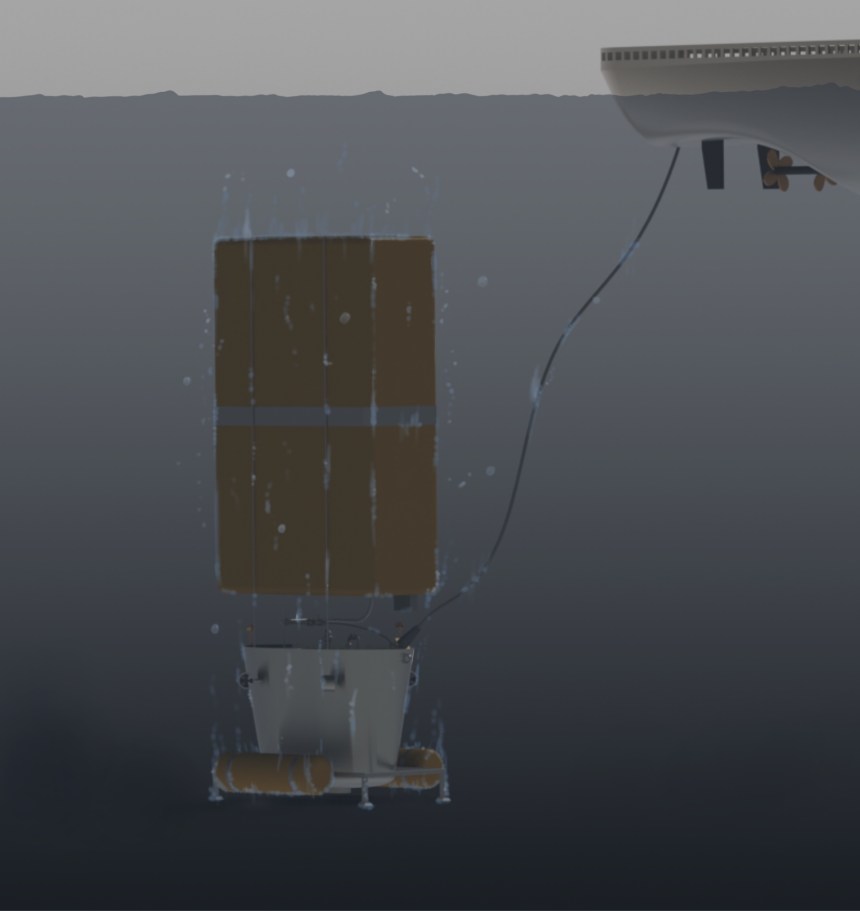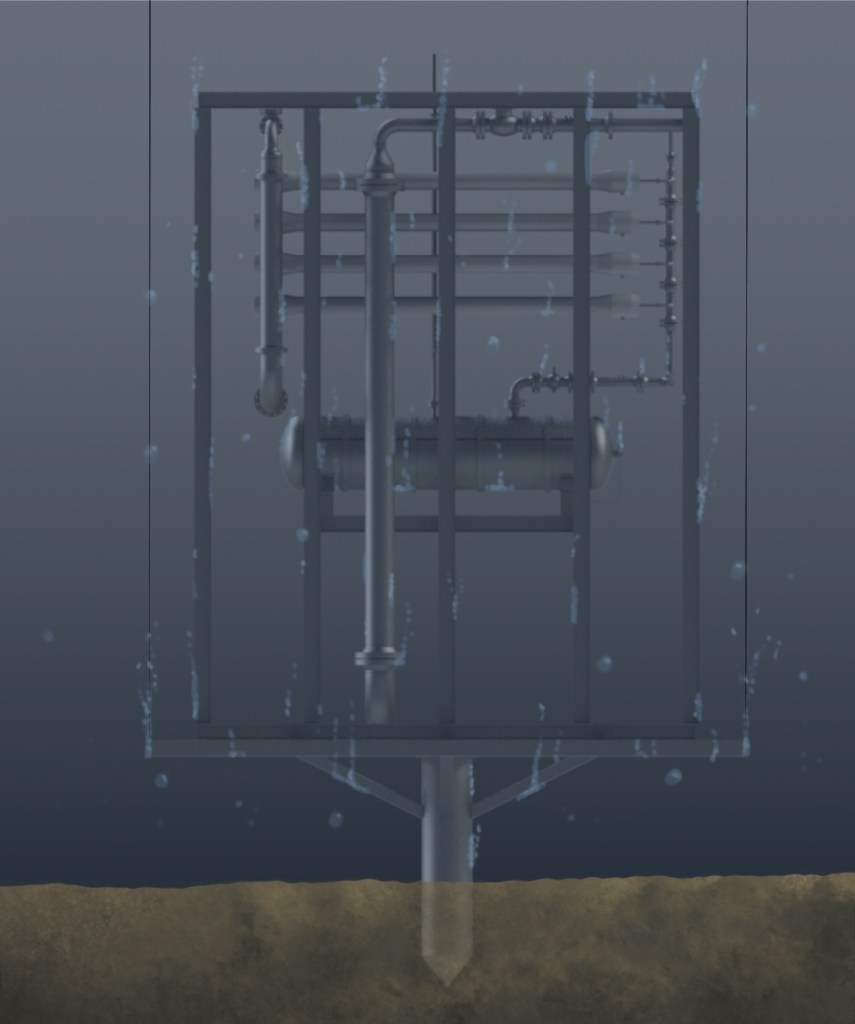Chess + Evans Deepwater Desalination Concept Patented

The United States Patent and Trademark Office has accepted a new method of deep-ocean, mobile desalination by Bob Evans and Susanne Chess that could revolutionize the production of freshwater.
Significant energy savings are predicted as deep-ocean pressure does much of the work required to force saltwater through reverse osmosis filters. The process is natural. By operating below 900 ft., where 90 percent of documented marine life exists, environmental impact should be low.
Sourcing freshwater through this revolutionary process won’t require establishing industrial-scale desalination facilities in high-value and vulnerable coastal properties.
Evans and Chess are entrepreneurs with a long history of ocean-based projects, including Evans spearheading the establishment of the California mussel harvesting industry and participating in a natural biofouling removal program for Chevron’s Platform Hilda.
The duo are the principals of Bob Evans Designs Inc., which manufactures proprietary Force Fins sold worldwide to military and sport scuba divers, swimmers and fly fishermen. The Ops Force Fin made for Jean Michel Cousteau earned them a “Time Magazine Innovation of the Year” award in 2002.
Benefits
As a result of climate change, increased drought, aquifer depletion and saltwater incursion, demand for desalination systems to produce freshwater is expected to grow dramatically over the next few decades. Chess and Evans’s unique system offers several potential benefits.
First, the mobile system units, which can be thought of as specialized ROVs, will individually produce up to 250 to 1,000 gallons of freshwater per minute (gpm). They can be deployed from ships or barges for emergency response, or to address freshwater demand in coastal areas and island nations that have access to deepwater.
Second, the system is estimated to reduce reverse osmosis power requirements by up to 40 percent by using ocean pressure at depth to drive the process.
Third, the system minimizes environmental impact by operating deeper than 900 ft., the depth of the diel vertical migration of phytoplankton, which produce more than 70 percent of the Earth’s oxygen. This also reduces filtering requirements and density of brine discharge. In this regard, the system responds to United Nations Sustainability Goals.
In addition, the system incorporates an innovative buoyancy system, which directs some of the freshwater produced into a bladder to provide lift in saltwater, similar to how a hot-air balloon rises. As a result, the system can function in the water column and not disturb benthic communities on the seafloor.
Next Steps
The next phase of the project is expected to take 18 months and will entail building a pilot plant module with the help of Innovative Design Inc. (IDI), based in Knoxville, Tennessee. The firm, which specializes in reverse osmosis technology, has worked on multimillion-dollar projects with one of the largest desalination companies in the world and lists Oak Ridge National Laboratory and CERN, the European Organization for Nuclear Research, among its clients.
Inventor and commercial-diving pioneer Phil Nuytten, founder and CEO of Nuytco Research Ltd. and Can-Dive Construction Ltd., which builds atmospheric diving systems, will serve as a consultant.
Chess and Evans are looking for potential investors and partners as they raise money for a pilot plant.
Learn more at ChessEvans.com.

